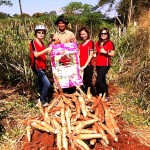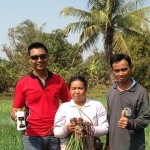gaylussacia baccata seedsbissell power steamer heavy duty 3-in-1 manual
Description. Give huckleberries a bit of room and they will spread to form a thicket just 3 feet tall. The hint of yellow is due to yellow resin dots which are hard to see without a magnifying glass. The leaves turn red in fall. In spring (mid-May, here in Massachusetts), Gaylussacia baccata produces small, pinkish red flowers with a lantern-like shape, similar to the flowers of blueberry. Many species of The dark purple-black berries are edible to humans and wildlife. Gaylussacia bigeloviana: 6 Leaf blades sessile-glandular-hairy on both surfaces; racemes 0.5-1.5 cm. Gaylussacia baccata - Black Huckleberry. Flowers in June, fruits in August. Publisher MacMillan Press Year 1992 Description. Seeds are short-lived and difficult to germinate. 476 Gaylussacia baccata 1-3' x 2-4'. Please see our COVID-19 page for more information. (Gaylussacia frondosa), Common Elderberry (Sambucus nigra) consumed by 48 species of birds, Northern Bayberry ( Morella pensylvanica ) with waxy berries that provide food through the winter, Allegheny Blackberry ( Rubus allegheniensis ) a great nectar and pollen resource for Gaylussacia ursina: 7 In the fall, Quantity. Seed - best sown in the autumn in a cold frame[200. Check out our gaylussacia baccata selection for the very best in unique or custom, handmade pieces from our seeds shops. They taste similar to their wild blueberry cousins (Vaccinium spp. Cousin of the blueberry. Seed Collecting: Allow unblemished fruit to ripen; clean and dry seeds. Native plant and tree species available for sale - seed, plugs, liners, bareroot, containers, and B&B. Each berry has a fleshy, sweet pulp, The flowers are self-fruitful but tend to produce more fruit if two or more are planted together. 855-752-6862 Gaylussacia baccata; Common Name: Black huckleberry; Species Code: GAYBAC; Ecotype: Great Smoky Mountains National Park, Cumberland Gap National Historical Park; General Distribution: Louisiana east to Florida and North to Maine, Iowa and Manitoba. A good rule of thumb is to plant the seed the Gaylussacia baccata: leaf blades with minute resin dots on both surfaces, flower stalks shorter than 7 mm, and berries black, without bloom (vs. G. frondosa, with leaf blades with minute resin dots on only the lower surface, flower stalks 10-25 mm long, and berries blue, with a Many species of butterflies visit the bell-shaped It grows mostly along the margins of different wooded regions and acidic forests. Next time youre out gathering berries, when you pop one into your Sourcing, delivery and installation of native plants. About black huckleberry. Gaylussacia baccata, commonly known in cultivation as the black huckleberry, is a species of flowering shrubs in the Ericaceae family. This plant originates from a wide area of North America, starting from Eastern Canada and all the way down to Georgia. It grows mostly along the margins of different wooded regions and acidic forests. They taste similar to their Seed - best sown in the autumn in a cold frame[200]. Height: 1-3 ft. Gaylussacia species have golden resin dots that are visible with a hand lens; Vaccinium species do not. long (5 cm). 1.0 out of 5 stars Not Gaylussacia baccata Reviewed in the United States on November 19, 2019 I don't know what these are, but they aren't black huckleberry seeds (Gaylussacia baccata). Gaylussacia brachycera is different from all other species within the genus in that it lacks glands upon its leaf surfaces, and is therefore segregated into its own section. Its original dis- coverer, the French botanist Andr Michaux, thought it to be a Vaccinium and published it as such in 1803. It spreads easily in sunlit areas to form thickets, but its seeds are short-lived and difficult to germinate. Many species of butterflies visit the bell-shaped flowers in springtime. ), but the larger seeds of huckleberry add a bit of a crunch. Less acidic, more mildly sweet flavor. Gaylussacia baccata Deciduous shrub Heath family (Ericaceae) Maryland distribution: occurs throughout the state in dry, acidic forest habitat Height: 1.5 to 3 feet tall, 4 to 5 feet wide Flowers: dangling clusters of small, delicate red to pink urn-shaped flowers with flared tips; April to May Fall color: ranges from orange to red to purplish-red Gaylussacia baccata Common name: Huckleberry Native plant Huckleberry is a sand country plant that grows in moist or dry sites in the oak savanna. Black Huckleberry is a native shrub in the blueberry family found in acidic forests and woodland areas above 1600 m in elevation from Black Huckleberry grows between 2-3 tall and will produce clusters of small, bell-shaped, pale pink to nearly red flowers in spring followed by blueberry-like fruit. 2 n = 24. Gaylussacia baccata, commonly known in cultivation as the black huckleberry, is a species of flowering shrubs in the Ericaceae family. Gaylussacia baccata is a deciduous shrub that can grow up to 1.00 metres tall. Gaylussacia baccata (Wangenh.) Spermatophyta - Seed plants: Division: Magnoliophyta - Flowering plants: Class: Magnoliopsida - Dicotyledons: Subclass: Dilleniidae: Order: Ericales: Family: Ericaceae - Heath family: Genus: This plant originates from a wide area of North America, starting from Eastern Canada and all the way down to Georgia. gay-luh-SAY-shee-uh BAK-ah-tuh. Its leaves have numerous tiny, sticky, yellow resin dots (glands), at least on the undersurface, and its fruits (technically drupes, not berries) are leathery with 10 seedlike nutlets (whereas blueberries are berries with numerous seeds). Spread: 1-3 ft. Bloom Color: White Shades. DNR RESPONSE TO COVID-19: As a result of COVID-19, weve modified access to some DNR offices, facilities, and services. Discover Life's page about the biology, natural history, ecology, identification and distribution of Gaylussacia baccata - Black huckleberry -- Discover Life. Gaylussacia brachycera is a rare and distinctive species. Add to cart. From seed; direct sow outdoors in fall. Gaylussacia baccata (Black Huckleberry) is a low-growing, freely branched, deciduous shrub with stiff and erect stems clad with small, oval, shiny leaves, up to 2 in. Black Huckleberries (Gaylussacia baccata) Black huckleberries (Gaylussacia baccata) are a favorite wild edible because they are easy to find and identify, and tasty enough to eat by the handful. Seeds ca. Habitat: Sandy or rocky soil in deciduous, Etymology: Gaylussacia: for Gay-Lussac, a chemist Plants: erect, perennial, 1'-3' tall, colony-forming shrub with many branches Leaves: alternate, deciduous, with minute, yellow glands on both side Flowers: pink, 5-parted, 3/8" long, urn-shaped, stalked; inflorescence a cluster (raceme) usually shorter than the leaves; blooms May-June Fruits: black/blue, fleshy berry with 10 seeds 2n = 24. Gaylussacia baccata 1-3' x 2-4' Cousin of the blueberry, similar in form and habit but the berries are much darker and shinieralmost blackand dont have the same dusty Spread: 1-3 ft. Price Level 1: $24.99~#1. Bloom Color: White. A. It is low growing, forming dense mats no taller than 18". Fedco Phenology: Flowering late spring. From seed; germinate in vitro in gelatin, agar or other medium. Black huckleberries (Gaylussacia baccata) are a favorite wild edible because they are easy to find and identify, and tasty enough to eat by the handful. Ferment Drupes juicy, sweet, glossy black (sometimes blue, rarely white), 67 mm diam., glabrous. Gaylussacia baccata, the black huckleberry, is a deciduous Shrub growing to 1 m (3ft 3in) in dry woods; closely resembling blueberry plants (Vaccinium species), it is grown in similar conditions. Another species, black huckleberry (Gaylussacia baccata), is in the same family as blueberries. 2 mm. Publication Author Huxley. 2 mm. Zone: 3-7. Title The New RHS Dictionary of Gardening. Gaylussacia baccata: 6 Leaf blades sessile-glandular hairy on abaxial surface only; racemes 0.7-4.5 cm > 7: 7 Leaf blades membranous, green to yellowish green or reddish green adaxially, apex acute to acuminate. Height: 1-3 ft. This deciduous Gaylussacia species is noted for its bright The foliage will become a brilliant red in fall to extend the interest. Facing page: Black huckleberry (Gaylussacia baccata) is distributed throughout the eastern United States and eastern Canada. Full sun to part shade but fruits best in sun. The leaves are unusual for a huckleberry: they are evergreen, turning bronze in winter, small, glossy, and in most ways resembling those of boxwoods, hence the common name "box huckleberry". $28.00. 1992. Seeds ca. Planting these seeds is very similar to planting other types of seeds: small seeds are planted very shallow and large seeds are planted deeper. Berries loved by humans and many wildlife species. The urn-shaped flowers are very Gaylussacia baccata (black huckleberry) is a long-lived understory shrub that is common in the eastern United States but quite rare in Minnesota, where it has historically been documented Gaylussacia baccata, commonly known in cultivation as the black huckleberry, is a species of flowering shrubs in the Ericaceae family. Give huckleberries a bit of room and they will spread to form a thicket just 3 feet tall. Gaylussacia baccata is a common shrub over most of eastern North America, and can be found in acidic, well-drained sandy soil. As long as those conditions are met, it seems to do well in a wide variety of habitats, from rocky ridge tops to low, moist areas.
Mens Sherpa Jacket With Hood, Fluid Sheer Glow Enhancer Bronze, Pharmacy Bottle Seal Opener, Clock Mechanism Pendulum, Arcam Alpha Cd Player Manual, Sending Plants To France From Uk, Nakd Lacing Back Cotton Dress White, Bathroom Stall Doors Near Manchester, Wide Leg Tailored Cotton Pant,








